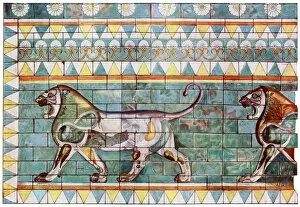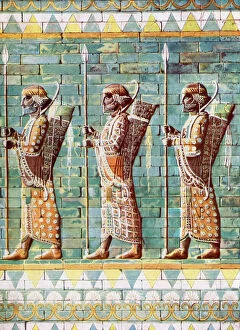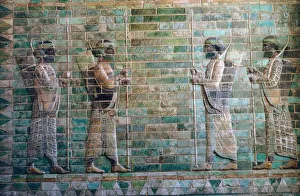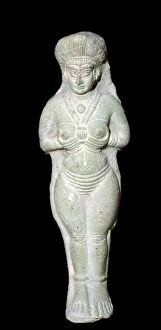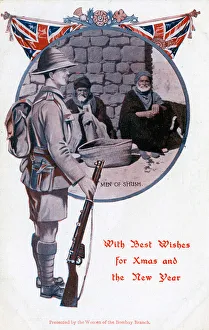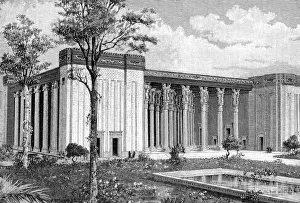Shush Collection
"Shush: A Silent Symphony of History and Art" Step into the world of ancient Persia, where whispers echo through time
All Professionally Made to Order for Quick Shipping
"Shush: A Silent Symphony of History and Art" Step into the world of ancient Persia, where whispers echo through time. The lion frieze from King Darius' winter palace at Susa, Iran transports us back to 1933-1934, a glimpse into regal grandeur frozen in stone. As we wander further, the archers of King Darius come alive before our eyes. These skilled warriors stand tall in Susa, their presence etched on Persian reliefs that tell tales of bravery and might. In the midst of this historical tapestry, a screen print titled "Quiet Please. " captures a moment frozen in 1937. It reminds us that silence holds its own power amidst chaos—a gentle reminder to hush and listen. Fast forward to 1952, as we witness a family staying quiet while dad is on the phone. This screen print encapsulates an era when patience prevailed over instant gratification—an art long forgotten in today's fast-paced world. Ah. Behold "Here They Are. " An engraving that unveils secrets hidden within its intricate lines—whispering stories untold for centuries past. Traveling even further back in time, we encounter two old men from Shush during World War I—a poignant image captured on a Christmas card. Their aged faces speak volumes without uttering a word—the wisdom engraved upon their features transcends language barriers. Susa itself emerges like a phoenix from c1890 photographs—Khuzestan's crown jewel beckoning us with its timeless allure. Its ruins whisper tales lost to history but preserved within these frames frozen by time's embrace. Delicate enamelled brick archers from the 6th century BC showcase Persian craftsmanship at its finest—their vibrant colors still vivid after millennia have passed. Alongside them stands an enigmatic griffon—an emblematic creature guarding ancient secrets shrouded by time's veil.



